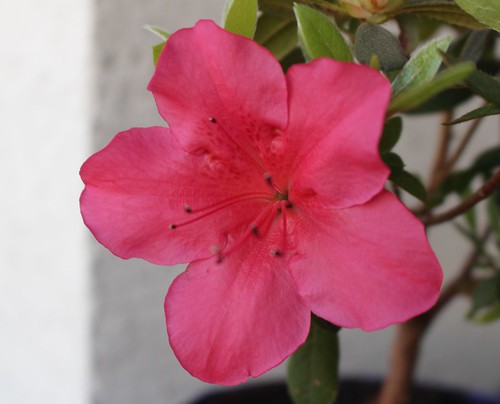@Clicio - Turface is a brand name of a group of products, MVP is one of several similar products. They are officially defined as "Heat Treated Montmorillonite Clay Mineral" and Montmorillonite is hydrated sodium calcium aluminium magnesium silicate hydroxide (Na,Ca)0.33(Al,Mg)2(Si4O10)(OH)2·
nH2O. It has a moderately high CEC, cation exchange capacity, and it is relatively soft, can hold water, and swells as it does hold water. It will also hold fertilizer due to its CEC. This can be good, or can be bad, depending on the quality of your irrigation water.
Azalea are calcifuges or calciphobes, they dislike excess calcium in their water and environment. The CEC capacity of Turface and related products means that if your irrigation water is high in calcium Turface can cause you problems. If you have water that is over 400 ppm total dissolved solids or 350 mg/liter as calcium carbonate, I would avoid using Turface. If your irrigation water is low in dissolved calcium, Turface may be good. I dislike the product. I have had issues with the product. 0soyoung uses Turface and grows beautiful plants. I suspect he has relatively pure irrigation water or frequent enough rain that the constant flushing with low calcium water avoids the problems with Turface.





